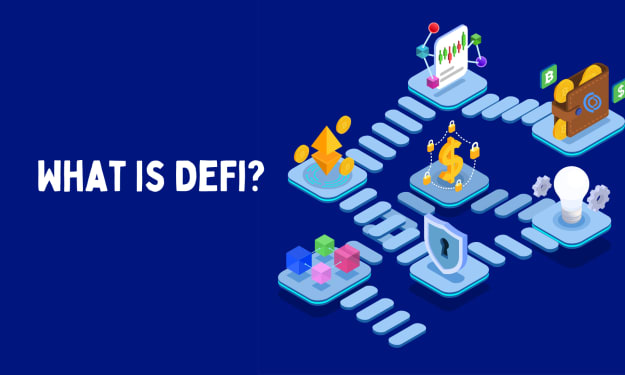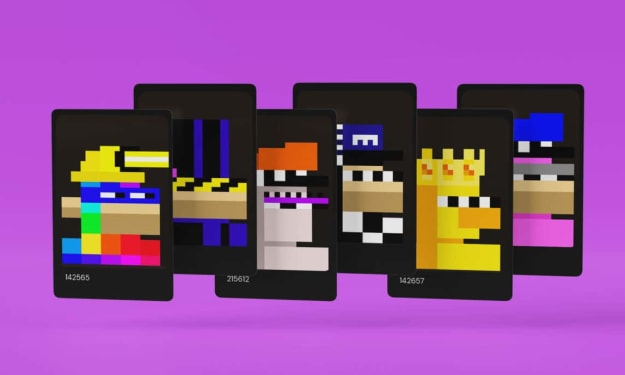The 10 Most Difficult Things About Cryptocurrency Mining
As the prominence of digital assets continues to rise, it’s important to know the most difficult things about cryptocurrency mining to stay ahead of the game.
Also referred to as cryptomining, cryptocurrency mining is the process in which digital assets are added to a digital ledger known as the blockchain, which consists of “blocks” of previous transactions. As a result of the mining process, new assets are generated and the network is strengthened because the miner has verified the legitimacy of the transactions previously made. As cryptocurrency mining becomes increasingly popular and the number of miners rises, the stakes become higher while the rewards get harder to achieve. The mining process maintains a level of difficulty to keep the market competitive, and it's become one of the key things you need to know about cryptocurrency culture. It’s important to know the challenges that cryptomining presents if you want a shot at being a successful miner, so here are the most difficult things about cryptocurrency mining that you should know if you’re interested in becoming a miner yourself.
1) The mining process is intentionally difficult to ensure the network is secure.

Like the Federal Reserve in the case of the US dollar or how a fiat currency is backed by the government that issues it, miners are what back the reserve of cryptocurrencies such as Bitcoin. As such, miners reinforce the security of digital currencies by keeping track of and verifying that every single transaction made is not fraudulent. Unlike an institution such as the Federal Reserve, miners are not a centralized regulatory authority; instead, computers all over the world exist in a mining network that produces a public list of all transactions that can be viewed by anyone to achieve optimal transparency. Because these miners are maintaining the integrity and security of the blockchain, the process of adding new transactions to this chain is intentionally made difficult in order to uphold the security of the network.
2) It’s actually a two-step process.
Mining requires the satisfaction of two separate conditions, one being fairly simple and the other essentially boiling down to pure, dumb luck. Firstly, a miner must verify roughly one millibyte of transactions, which is easy insofar as it only requires effort on the part of the miner. The second condition that needs to be met is being the first miner to provide the correct 64-digit hexadecimal number, referred to as a hash, that is less than or equal to the target hash. This second step is known as proof of work, and although technically it is the process of providing a solution to one or more computational math problems, it is essentially achieved by guessing. In order to optimize the chances that a guess is correct, a miner needs to maintain a high hash rate, which requires powerful computing.
3) The probability of successfully mining a block is statistically very low.

The second step of the two-step process, the proof of work, is intentionally designed to keep the chances of successfully adding a new block low. While it is easy for network participants to verify proof of work, it is time-consuming to produce. Bitcoin relies specifically on the Hashcash proof of work system in order to legitimize the blockchain transaction log and keep the blockchain secure. The complexity and difficulty of this proof of work serve to regulate the rate at which miners in the network can generate new blocks, making it so that only one newly created block can be produced within the network every 10 minutes. Because the likelihood of successfully creating a new block is already low, this rate only increases the difficulty of mining and lowers the chance of adding a new block.
4) The difficulty of producing proof of work is constantly adjusted.
As mentioned, the proof of work serves to keep the blockchain secure, but it also helps regulate how many blocks are added to the blockchain. Bitcoin intentionally adjusts the difficulty of this process in order to maintain the aforementioned rate of one block every 10 minutes, and as such, mining consistently remains intensely competitive. This means that the more miners there are trying to generate new blocks, the harder it is algorithmically to successfully accomplish this feat. With hash rates rising, the difficulty of the mining process itself only continues to increase to maintain its competitive nature.
5) Mining equipment is expensive.

In order to reach the necessary computational power, specialized mining equipment is required. Either an application-specific integrated circuit miner, ASIC miner for short, or a graphics processing unit miner, also known as a GPU, can be used to successfully mine cryptocurrency, and neither of these are cheap. Ranging anywhere from $500 to upwards of $10,000, there’s a hefty price to pay to enter into the cryptomining game, but investing in equipment is essential if you want to successfully mine. Alternatively, some miners opt to purchase individual graphics cards to create homemade mining machines at a lower cost. This appears to be a particularly popular practice for those mining Ethereum, and while it isn’t the most efficient mining method, it is a way to cut costs.
6) It isn’t always profitable.
Because the process is intentionally kept difficult, and because it is both time-consuming and costly, there is a chance that you could actually lose money by trying to mine cryptocurrency. Mining is attractive because technically, anyone with a computer and internet access can do it, but that initial threshold is deceptively simple. A lot of time, and typically a sizeable monetary investment, are required at the start to get up and running, and for cryptocurrencies like Bitcoin, more advanced hardware is required to get the job done, which means more money out of pocket. Additionally, the speed of your computer and the amount of electricity required to keep your computer up and running factor not only into the costs associated with mining, but also the chances that your mining is successful.
7) Mining can quickly become centralized.

Centralization in cryptomining has become such a prevalent issue that some cryptocurrencies have actually configured their networks to be resistant to ASICs in efforts to keep large mining operations from dominating. Centralization is not only an issue in terms of accessibility to the rewards of mining, but it also poses a threat to network security. Centralized entities are more susceptible to attack, and therefore keeping a majority of mining within one area of the network is actually dangerous.
8) Proof of stake challenges proof of work, but has difficulties of its own.
The concept of proof of stake is that miners can validate block transactions based on how many coins they already own, thereby giving more power to those who already have accrued a large amount of any cryptocurrency. Based on the percentage of coins owned by a miner, proof of stake counters proof of work by placing value not on the singular algorithmic efforts of the miner, but on their current cryptocurrency holdings. This was mainly introduced for security reasons, as it is less advantageous for anyone to try and hack the system through the configuration of compensation. While it keeps centralized juggernauts from dominating the mining market, proof of stake does not yield a block reward and it is a less proven method of validating block transactions, posing its own difficulties for potential miners.
9) Mining isn’t energy efficient.

Cryptocurrency mining is actually consuming a sizable portion of the world’s energy, so much so that the Bitcoin Energy Consumption Index was created in order to track the environmental impact that cryptomining has. Because the proof of work system requires miners to use massive amounts of energy to continually generate hashes, the creators of the index felt the need to highlight the proof of work algorithm as an unsustainable one in the long haul. While some have questioned if Bitcoin is losing popularity, the energy consumption of Bitcoin mining alone is comparable to some of the world’s biggest energy consumers, rivaling some of the nations with the highest energy consumption on the planet. This constant demand for electrical resources is only a difficulty for miners with limited access to electricity, but also to global sustainability.
10) With a diminishing block reward, cryptocurrency becomes harder to mine.
As previously stated, Bitcoin miners are rewarded with additional Bitcoin when their mining is successful. After adding a new block of transactions to the blockchain, a set amount of newly generated Bitcoin is released. This is referred to as the “block reward,” and every 210,000 blocks, the reward is halved, making Bitcoin more scarce. This occurs roughly around every four years, and approaching 2020, the block reward will be halved to only 6.25. Because of that current trajectory, the total number of Bitcoin is nearing a cap of 21 million, which not only increases the scarcity and thereby the value of Bitcoin, it also increases the difficulty of the process of mining Bitcoin. This goes for other cryptocurrencies as well; most have a limit on how much can be mined, making it only more competitive and challenging to succeed.
All of these challenges complicate the process of cryptomining and lower the chances of profiting from mining cryptocurrency. While new cryptocurrencies like Libra and different mining tactics are continuously being developed, the limited supply of a given cryptocurrency will always make mining a competitive and arduous process. Ultimately, a certain level of difficulty is necessary in order to maintain the security of the blockchain. It's important to understand the most difficult things about cryptocurrency mining if you're interested in mining so that you're fully aware of the challenges that cryptomining poses before you dive right in. But if you're still looking into it, at least you've been warned.






Comments
There are no comments for this story
Be the first to respond and start the conversation.